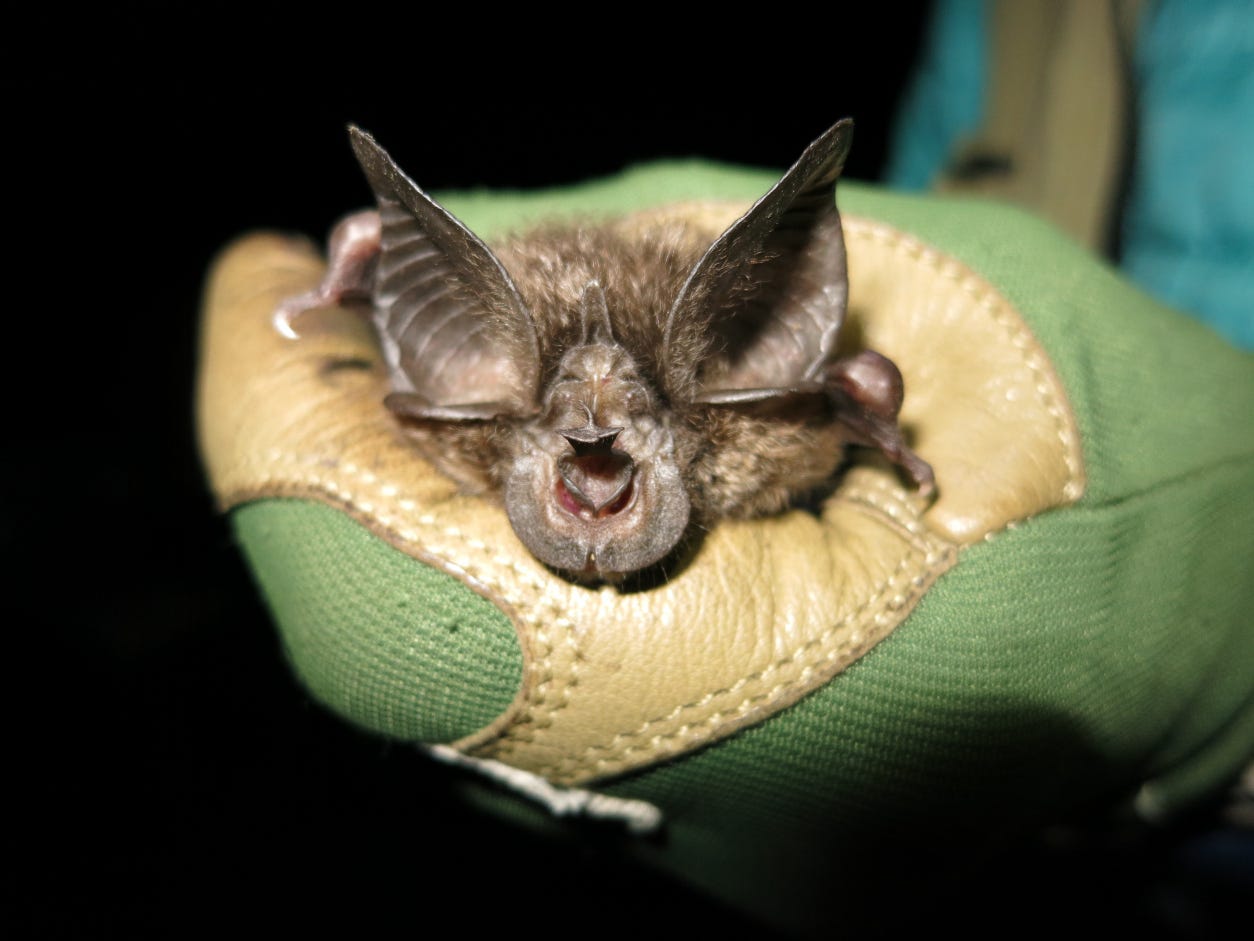In the rainforest of Rwanda, scientists have for the first time in 40 years rediscovered a bat that many feared had become extinct. Through a years-long effort, a specimen of the Hill’s horseshoe bat was captured and identified. The last time anyone saw one of these bats, Ronald Reagan was president of the United States, Duran Duran topped to pop charts, and we didn’t make calls on cell phones* or surf the internet on laptops.
Efforts to find the bat go back nine years, to 2013, and were led by Bat Conservation International, Rwanda Development Board, and the Rwanda Wildlife Conservation Association.
The Hill’s horseshoe bat has always been elusive, and from what I’ve been able to dig up on the internet, this bat has only been scientifically recorded twice before, once in 1964 and again in 1981, the last time it was observed. They have only been found in a 40 square mile tract of land in Rwanda that lies south of Lake Kivu and north of Rwanda’s border with Burundi. Though much of the bat’s range lies within Nyungwe National Park, which has been called “probably the best preserved montane rainforest in Central Africa,” it is still threatened by habitat loss and over harvesting of bushmeat. The International Union for Conservation of Nature includes the Hill’s horseshoe bat on their Red List of Critically Endangered species.
The team captured a bat in January 2019, during a ten-day expedition in the National Park. Dr. Winifred Frick, the Chief Scientist for Bat Conservation International, says, “We knew immediately that the bat we had captured was unusual and remarkable. The facial features were exaggerated to the point of comical. Horseshoe bats are easily distinguishable from other bats by characteristic horseshoe shape and specialized skin flaps on their noses.”

The scientists were able to record the bat’s echolocation calls and carefully measured the bat’s physical characteristics before releasing it back to the wild. The realization that the team had found the bat were cemented when Dr. Jon Flanders, BCI’s Director of Endangered Species Interventions, compared the team’s findings to specimens in European museums.
The team conducted audio surveys of the horseshoe bat’s echolocation call at 23 sites for nine months and detected the bat at eight locations, all of which were in a restricted area. “All the work so far confirms that this is a very rare species with a very small core range. We look forward to collaborating with the Rwanda Development Board and Nyungwe Management Company to strengthen the existing conservation efforts to ensure it stays protected,” said Dr. Winifred Frick, Chief Scientist for Bat Conservation International. The scientists expressed hope that the recording of the bat’s echolocation call will help them find and identify this rare mammal in the future.
As anyone will tell you, bats are really cool.
Other good new
In this podcast, freelance environmental journalist Veronica Perkova gets some great news from Claire Lewis, a conservationist from Britain who manages the North Luangwa National Park in Zambia.
According to Lewis, the efforts at preserving the park, which lies about 75 miles west of Lake Malawi, are paying off. Elephants, rhinos, and wild dogs have all rebounded to healthy populations in the park. According to Lewis, the breading herds of elephants have “properly settled down” after the decimation they experienced in the 1970s and 1980s. She says that not only have their numbers increased, but their behavior is noticeably improved. This has become more obvious since the pandemic and there have been fewer people and vehicles in the park.
The park occupies 1,790 square miles and, with the 8,495 square miles of the larger North Luangwa ecosystem, comprises a land mass that Lewis says is about the size of Wales.
Founded as a game reserve in 1938, the North Luangwa National Park was rededicated as a national park in 1972. Despite the park designation, the rhinos, wild dogs, and elephants remained victims of hunting and poaching throughout the seventies and into the eighties. The numbers dwindled, which led in part to the establishment, in 1986, of the North Luangwa Conservation Program, which is a partnership between the Frankfurt Zoological Society and the Zambian Department of National Parks and Wildlife.
Hunitng of lions still continues outside the park, but Lewis says that they seem to be doing quite well within the park and center much of their lives around the Luangwa River, which runs through the park. She says that wild dogs have recovered in the last decade as well. She attributes the success of the park to what she calls “foot coverage,” having folks out there on the ground scouting for poachers, evidence of poaching, and other harms to the park. Perkova has an additional story, with more detail, about the park here.
For more environmental news and science follow me on Twitter @EcoScripsit.
*OK, back in the early eighties, there were a very small number of folks to have mobile phones, big clunky devices that you could knock a horse out with, but their acceptance as a commonality of life was years away.





That is good news. What a remarkable species.